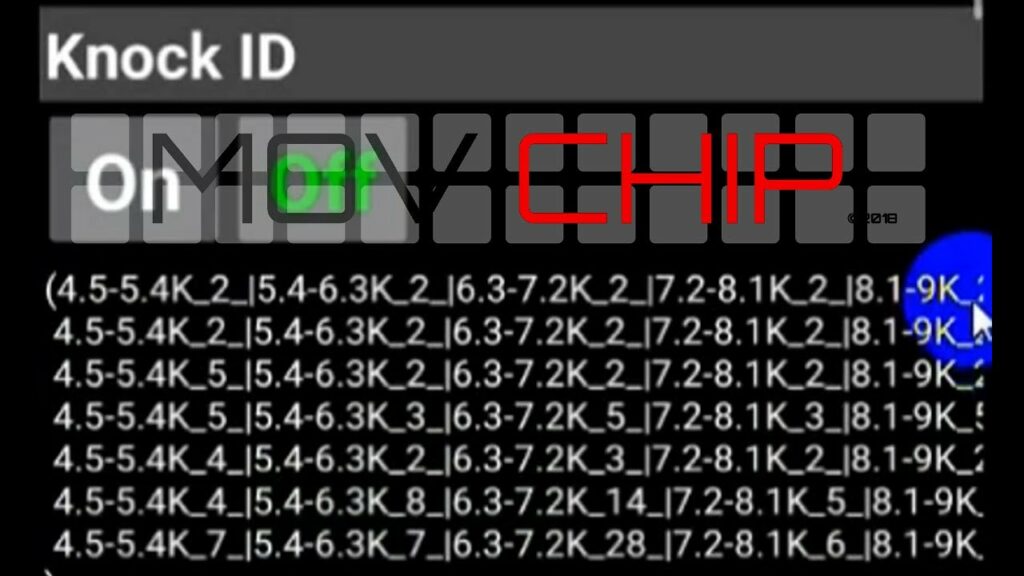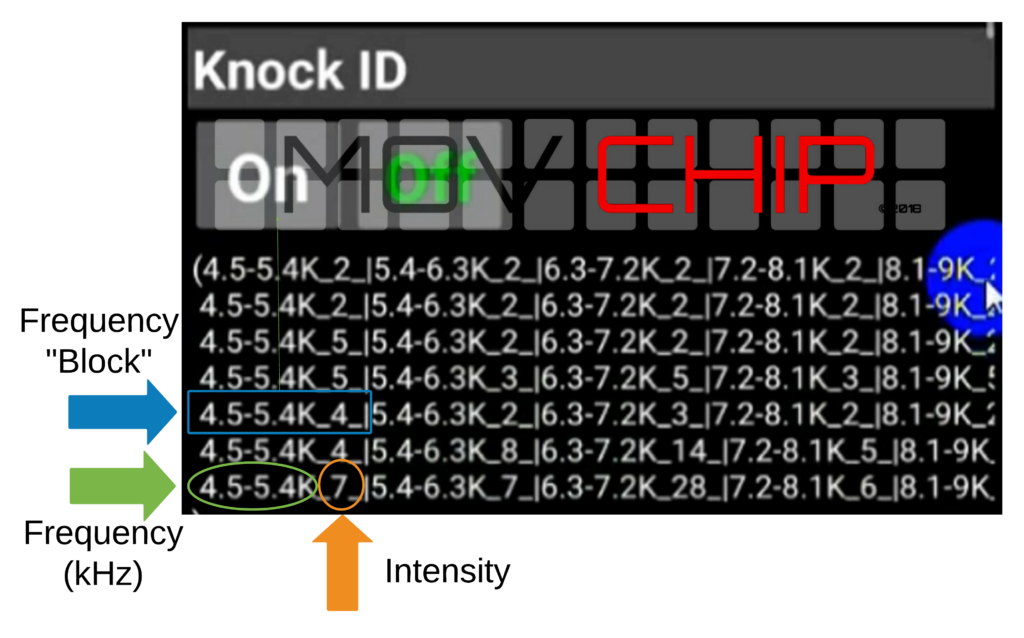Knock Frequency Identification Tool – Product Update
2 min read
There is a new video on the MoviChip YouTube channel. The video looks at the “Knock ID” function in the upcoming Knock Sensor Controller (KSC) product. The “Knock ID” identifies the knock frequency of an engine by analysing the knock sensor signal in knock and no-knock conditions.
You can see the video here.
Knock Frequency ID – Summary
In summary, the Knock ID tool, by analysing the knock sensor signal, lets you identify the knock frequency of the engine (more specifically the frequency output of the knock sensor signal which represents knock).
How it works
The KSC Knock ID tool outputs the intensity of frequencies from 5khz up to 11khz.
We record a run/s over a fixed RPM band (say 1500 to 2500 rpm) and fixed load (say 50%) with an ignition timing we know produces no knock.
We repeat the process but with an ignition timing we know produces slight knock.

We compare the intensities in the frequency blocks between the “no-knock” runs and “knock” runs to identify which frequency block sees the greatest increase in intensity. This frequency block will represent the knock frequency of the engine.
In the example from the video, the “frequency block” which represents engine knock is the “6.3-7.2K” block.
From the screenshot above (from the same video) we can see the 6.3-7.2K block, is the block whose intensity has increased the most “no-knock” run vs “knock” run.
From values of 2, 2, 2, 5 & 3 when the engine was not knocking, the intensity increases to 14 & 28 when the engine was audibly knocking. This means 6.3-7.2K is the knock frequency block which represents knock for this engine (unless something else has also changed between the knock and no knock runs).
For more information on the KSC visit the product page.
The KSC is currently in development, we expect the first order to be dispatch mid November.
To keep up to date with the developments of this product, subscribe to the MoviChip newsletter.


